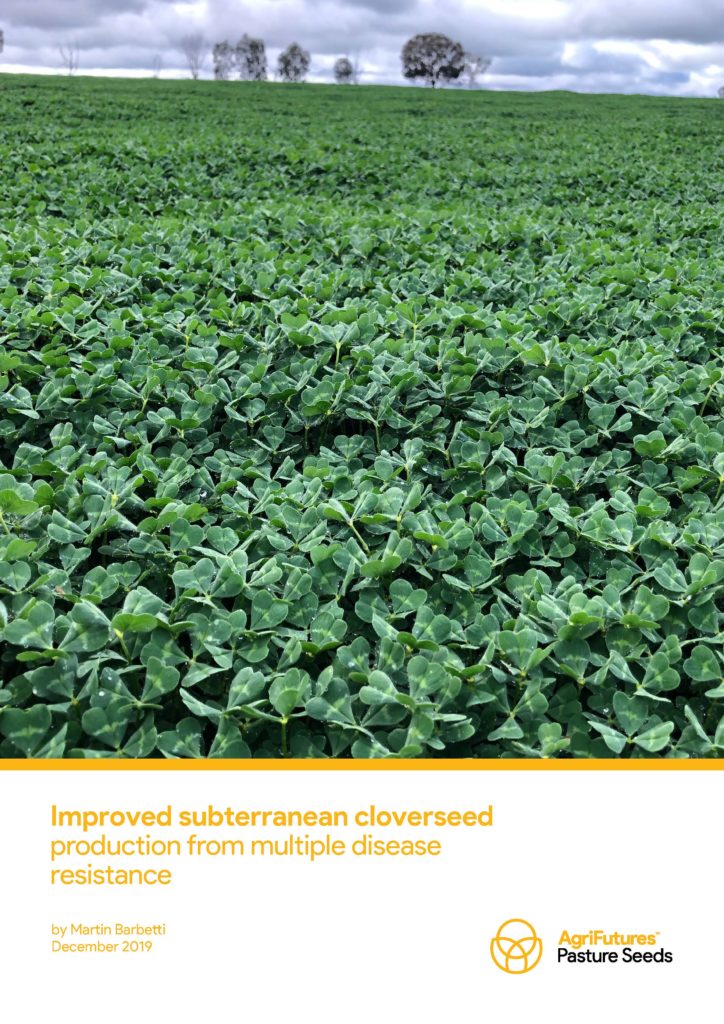Diseases are a major cause of subterranean clover production losses in the seed (and associated livestock) industries. Soil-borne root rot pathogens can cause seedling losses exceeding 90%. This has a major impact on seed production stands and grazing paddocks, due to greater weed competition, weaker root systems and reduced biomass and seed production. In addition, seed production stands are also highly vulnerable to fungal foliar diseases that cause additional serious major seed yield losses. The latter is particularly so as dense seed production stands that are heavily subterranean clover dominant creates an environment especially conducive to severe foliar diseases.
This project consisted of two integrated parts. The first part involved phenotyping the 97-member subterranean clover core collection, which represents approximately 80% of the genetic diversity within the species, along with 28 diverse cultivars for reactions to the damping-off and root rot pathogens, Pythium irregulare and Phytophthora clandestina and to the foliage diseases, clover scorch (to both races) and rust. The second part involved identifying molecular markers closely associated with genes and Quantitative Trait Loci (QTLs) for resistance to each of these four diseases (and against both races in relation to clover scorch). This project successfully applied these technologies to research disease resistance traits for these major diseases that currently limit seed production.
This research will provide subterranean clover breeding programs with access to freely available information the on the genetic diversity and molecular makers present in the diversity panel of 97 core collection lines and 28 diverse cultivars of subterranean clover (evaluated in this study). This information will assist in simultaneously selecting genotypes with genes for multiple disease resistance and other desirable traits.





